Estimated reading time: 5 minutes

It was time for the morning walk around the yard, and we were surrounded by our lovely flowers—gladiolas! For the past week, we have cut and taken gladiolas to people when we go out, including the doctor’s offices, the Elks Lodge, and even restaurants we frequent. They are pretty popular.
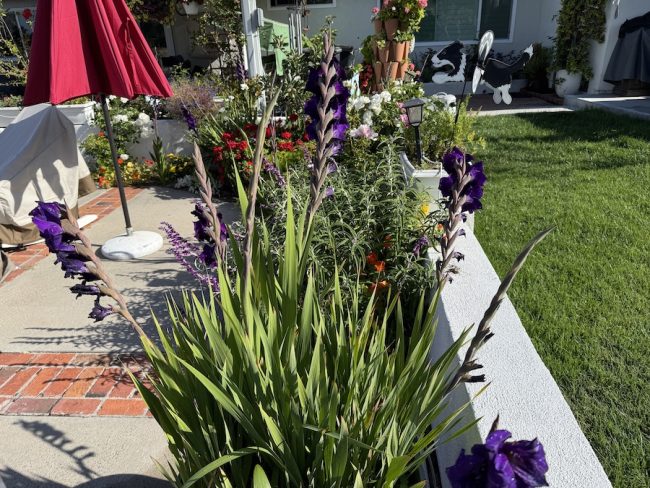
The backyard flowers are pretty magnificent.
Glads come in many colors, as you can see below:
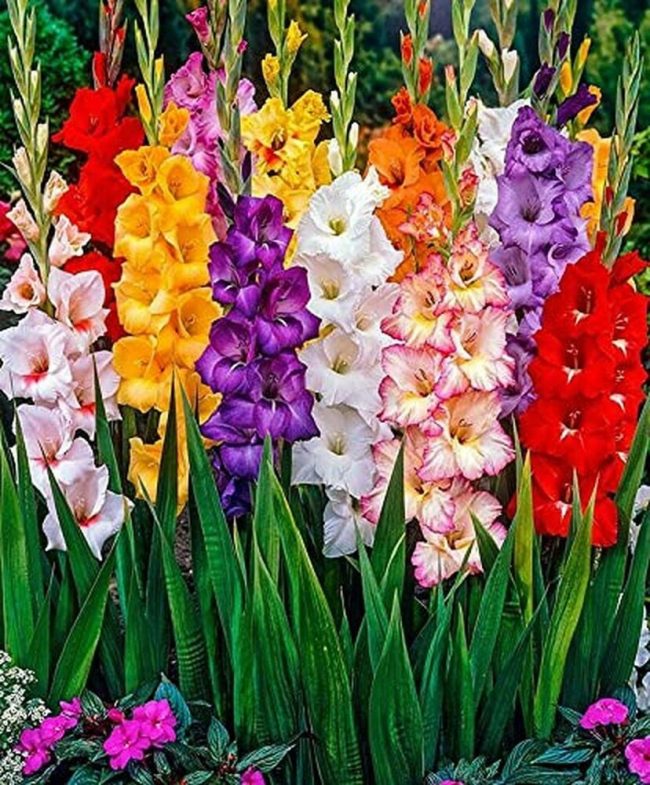
Next year we will try some other colors!
The plums look magnificent, and we need to check on them every morning. As soon as we see a single bird strike, we will move our wind-driven whirlygigs next to the tree. There are about 70 plums on the branches at this time.
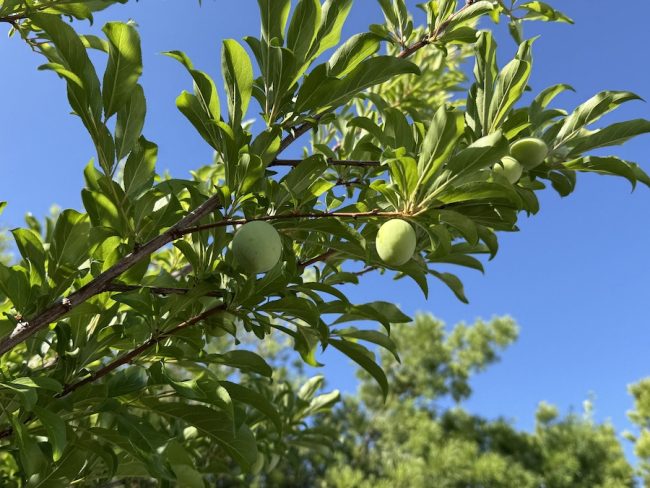
The plums are coming along nicely.
We checked, and the tassels are turning color, meaning they will be dropping on the silks for several days. The nursery is open for business! Remember, unless the tassels fall on top of the silk, the corn kernels will not fully form! Some of our corn plants are in the process of producing three ears of corn!
- The average ear of corn has 800 kernels in 16 rows.
- Only 1% of corn planted in the United States is sweet corn.
- Corn cobs always have an even number of rows.
- The types of corn grown in America are dent corn, flint corn, pod corn, popcorn, flour corn, and sweet corn.
- The world record for the tallest corn stalk is more than 35 feet.
- An acre of corn eliminates 8 tons of carbon dioxide from our air.
- There are 125 calories in a cup of corn.
- An ear of corn has one silk stand for every kernel.
- Each corn plant produces one to three cobs each.
- More than 90 million acres on earth are dedicated to producing corn.
- Corn was first domesticated in southern Mexico more than 10,000 years ago.
- Corn became more widely popular in the late 1700s when it became accessible to Europeans.
- Corn is used in foods like cereal, potato chips, soft drinks, cooking oil, and more.
- Corn is used in non-food items like fireworks, glue, fabric, crayons, fuel, paint, laundry detergent, cosmetics, and plastics.
- Corn is grown on every continent with the exception of Antarctica.
- Usually corn is yellow, but it can also come in colors such as green, red, or white.
- While many consider corn a vegetable, it’s actually both a grain and a fruit.
- Sweet corn becomes starchy easily, so it should be eaten within a few days after picking.
- The scientific name for sweet corn is Zea mays saccharate or Zea mays rugosa.
- The first mechanical corn harvester was invented by the Gleaner Harvester Combine Corporation in 1930.
- A bushel of corn can sweeten 400 cans of soda.
- Most countries outside of the United States call corn maize.
- 91 gallons of water is needed to produce one pound of corn.
- Maize is a Taino word that means “sacred mother” or “giver of life”.
- The United States produces about 1/3 of the world’s corn.
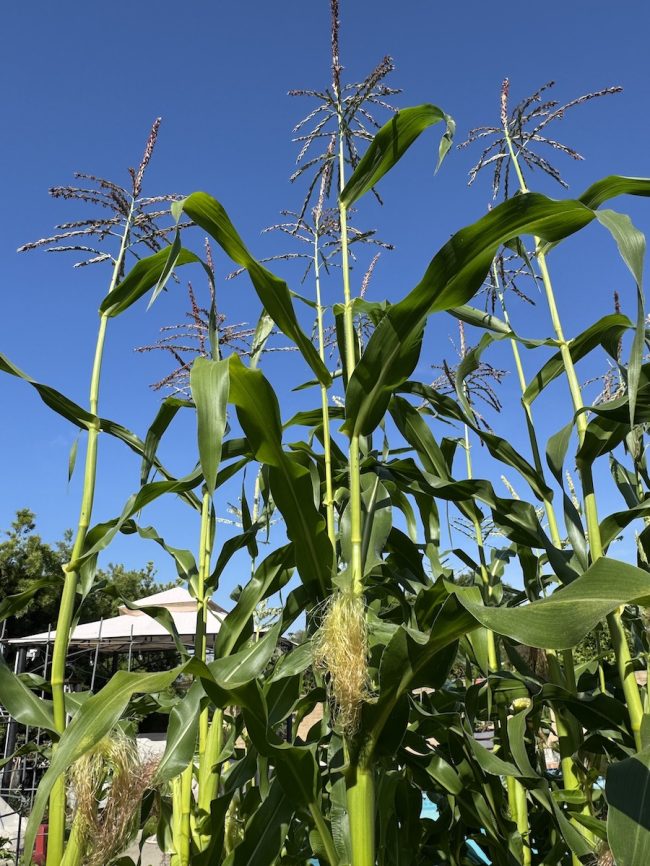
Corn as high as an elephant’s eye!
Yes, hollyhocks are edible! All parts of the hollyhock plant, including the roots, leaves, and flowers, are safe to consume. The flowers and leaves are often used in salads, desserts, and teas. The roots can be used to create a nutritious starch.
Along the west wall, I placed several hooks into the brick wall to tie back the Hollyhocks and keep them from falling over due to the prevailing wind.
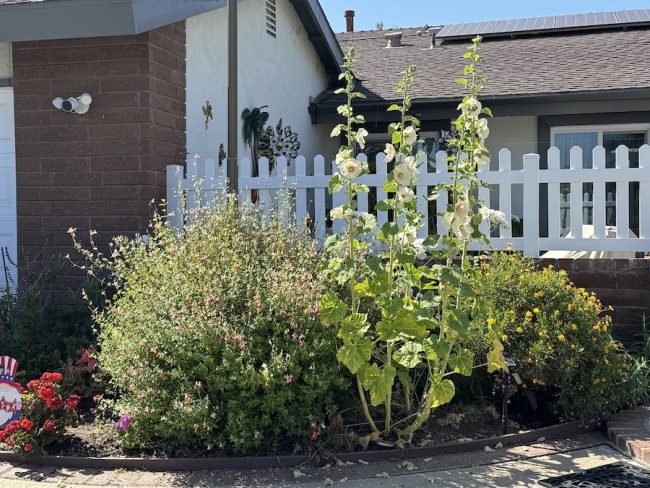
We have Hollyhocks in three places in the front yard, all ten feet tall or better.
To begin our experiment, we picked only four blossoms. The entire blossom, including the stamen and stem, is edible.
All parts of the hollyhock plant, including the flowers, leaves, and roots, are considered safe to eat. Hollyhocks can be used in various culinary applications, from garnishing dishes to adding flavor to teas and salads.
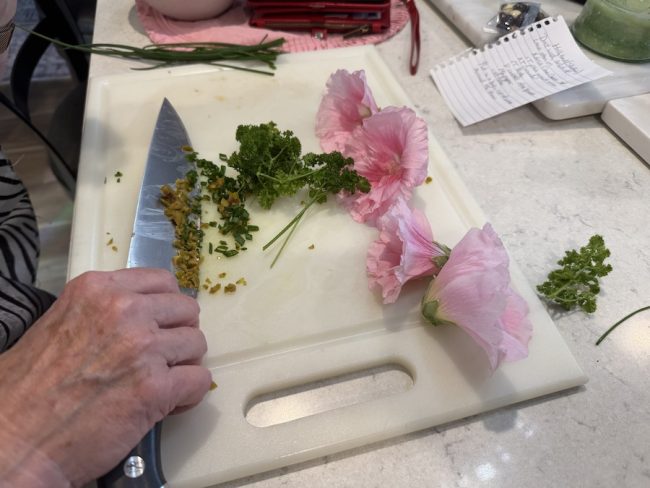
We picked four beauties!
To make the stuffing, we mixed cream cheese, yogurt, diced olives, and a garnish together We used a tad of pepper but no salt since the olives are already salty.
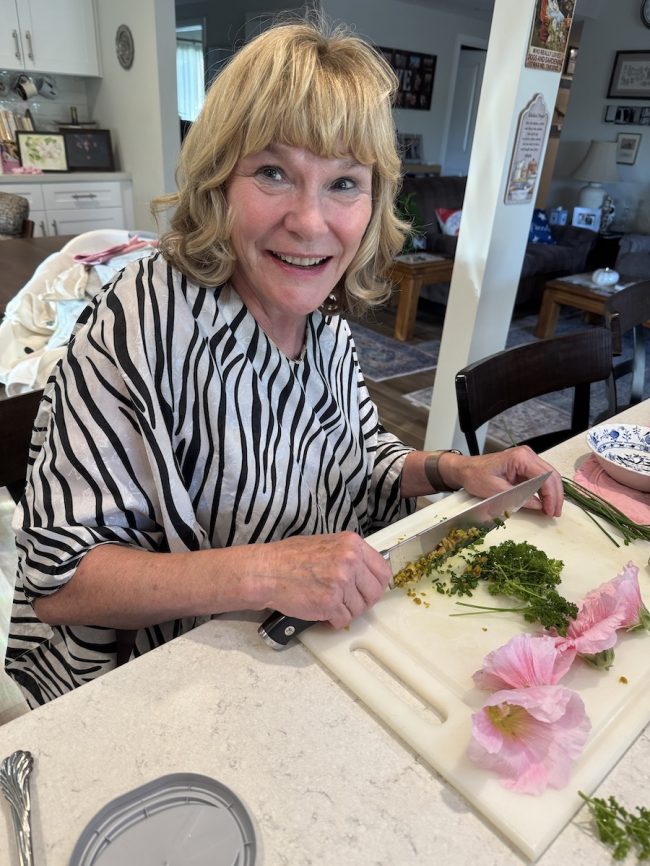
“Chopper-In-Chief” doing her thing!
The filling was placed in a freezer bag, and a hole was cut in one of the corners. We will pipe the stuffing into the flower! The culinary definition of pipe is to create a continuous, smooth, or decorative line using a pastry bag fitted with a tip.
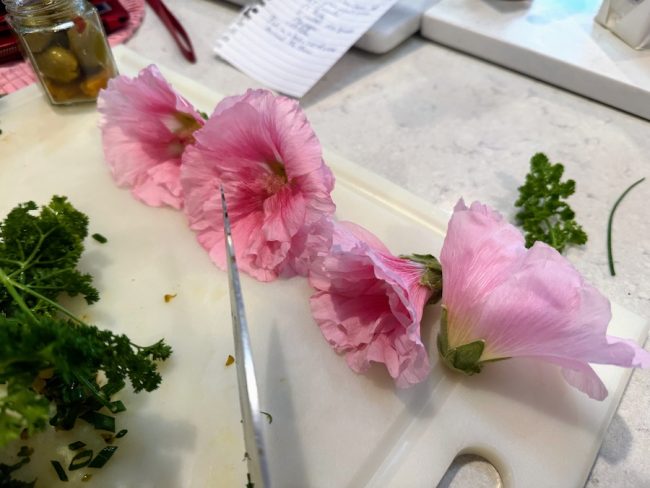
The surgeon was ready to operate!
After the piping was completed, we placed them on the dish we used for the lamb lollipops.
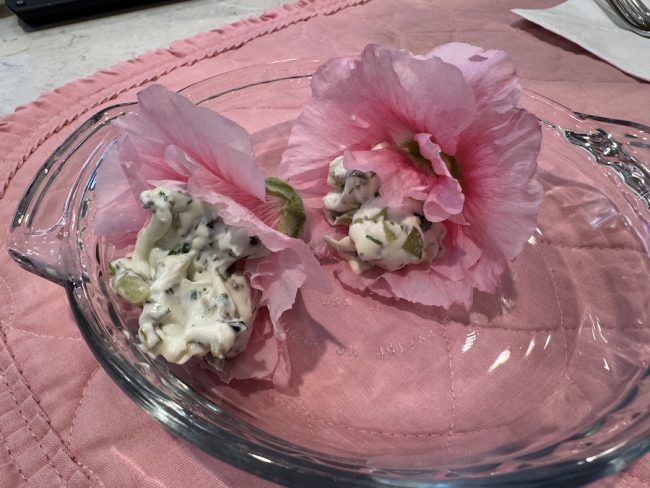
Lamb lollipops, also known as French lamb chops, are a visually appealing and easily edible cut of lamb. The term “lollipop” refers to how the bone is prepared: the meat and fat are scraped away, leaving a clean bone “handle.” This makes them easy to hold and eat like a lollipop.
The lamb was trimmed and ready to be put in the oven for three minutes per side!
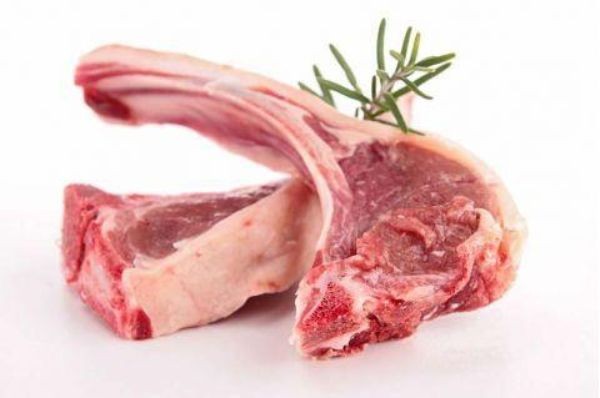
Three of these make a perfect meal!
We used some of our vegetables from yesterday’s corned beef dinner. The lollipops are blackened on purpose using a sauce I prepared from scratch. They were very tender and quite delicious.
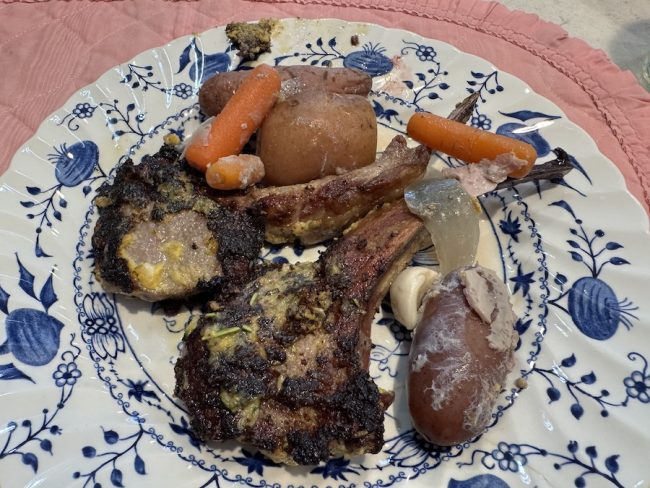
We had a magnificent dinner!
After dinner, we cleaned up the kitchen and headed to the TV room to continue watching The Blacklist. We are in season eight now; there are only two more seasons to go!! We watched until 11:30 p.m. and then crashed.

